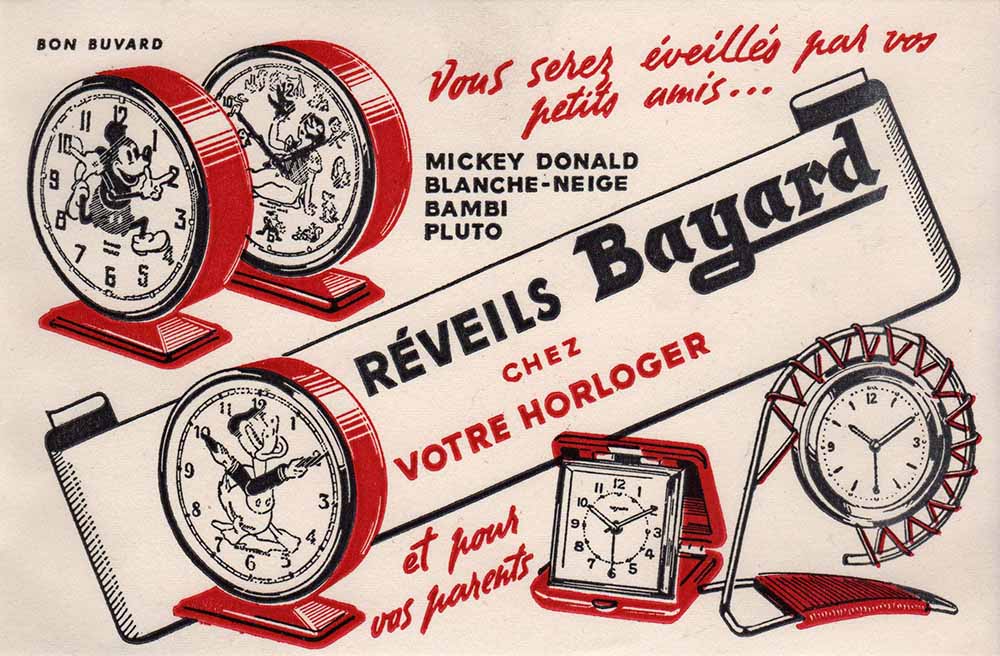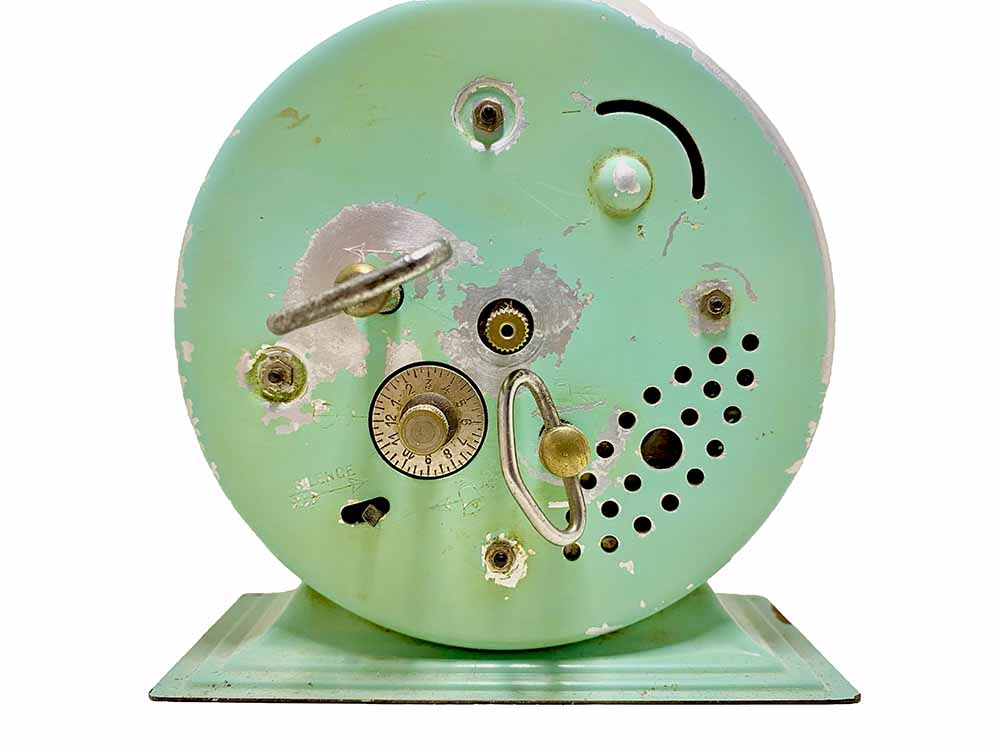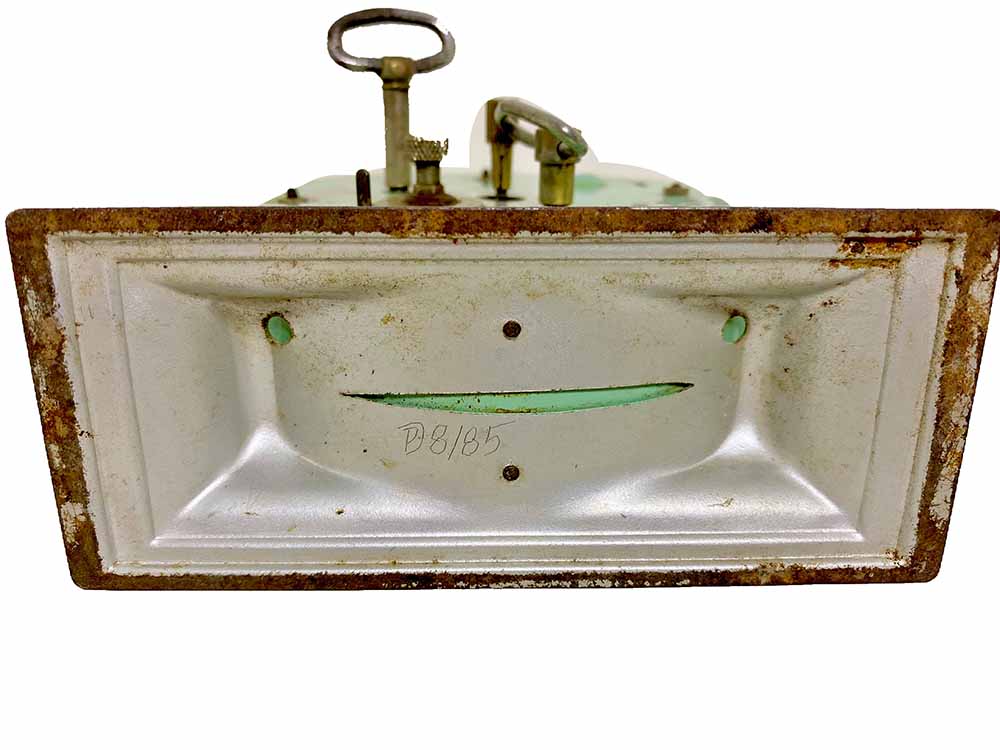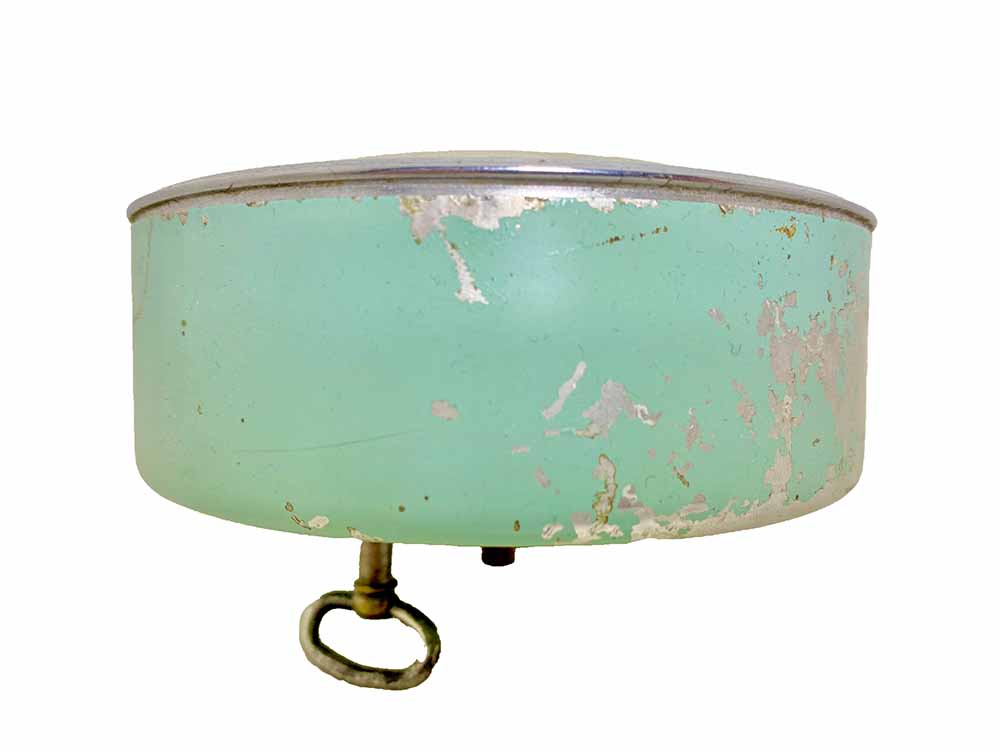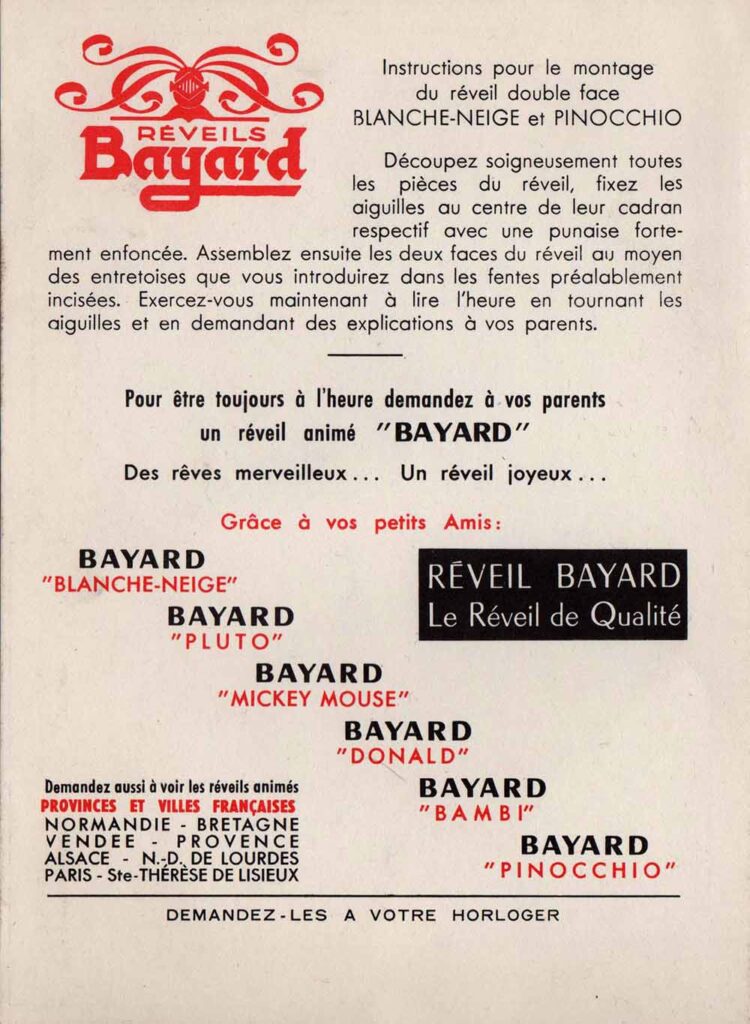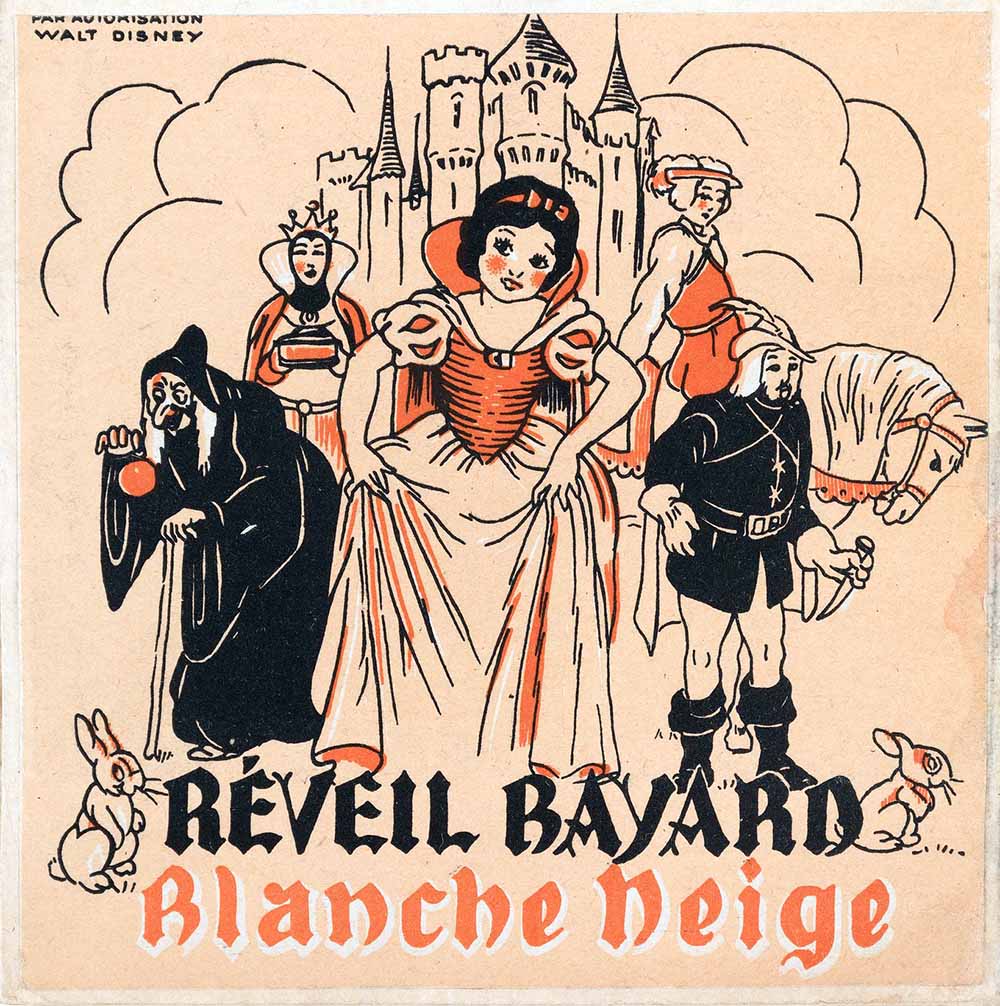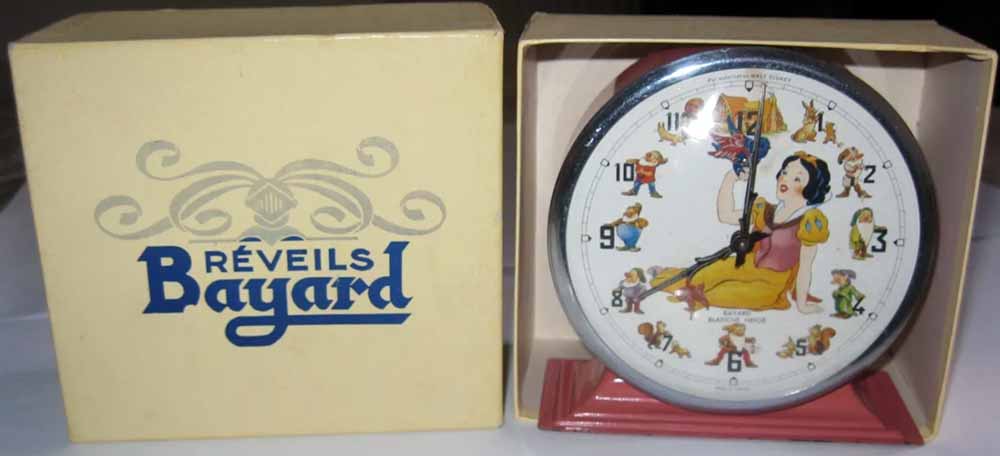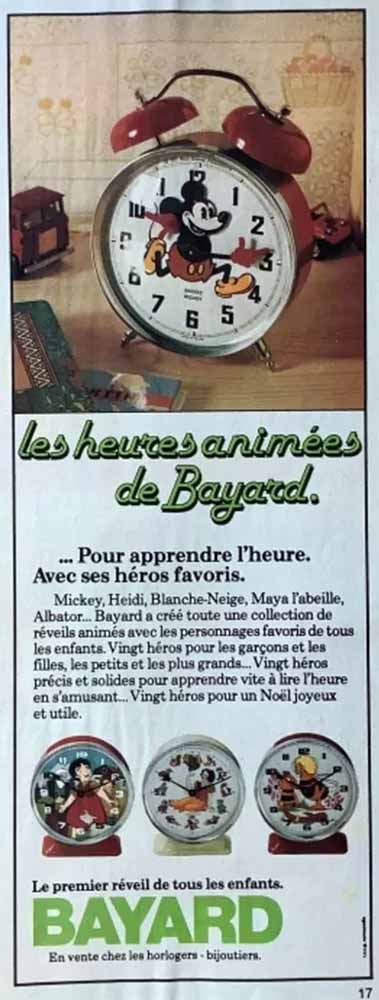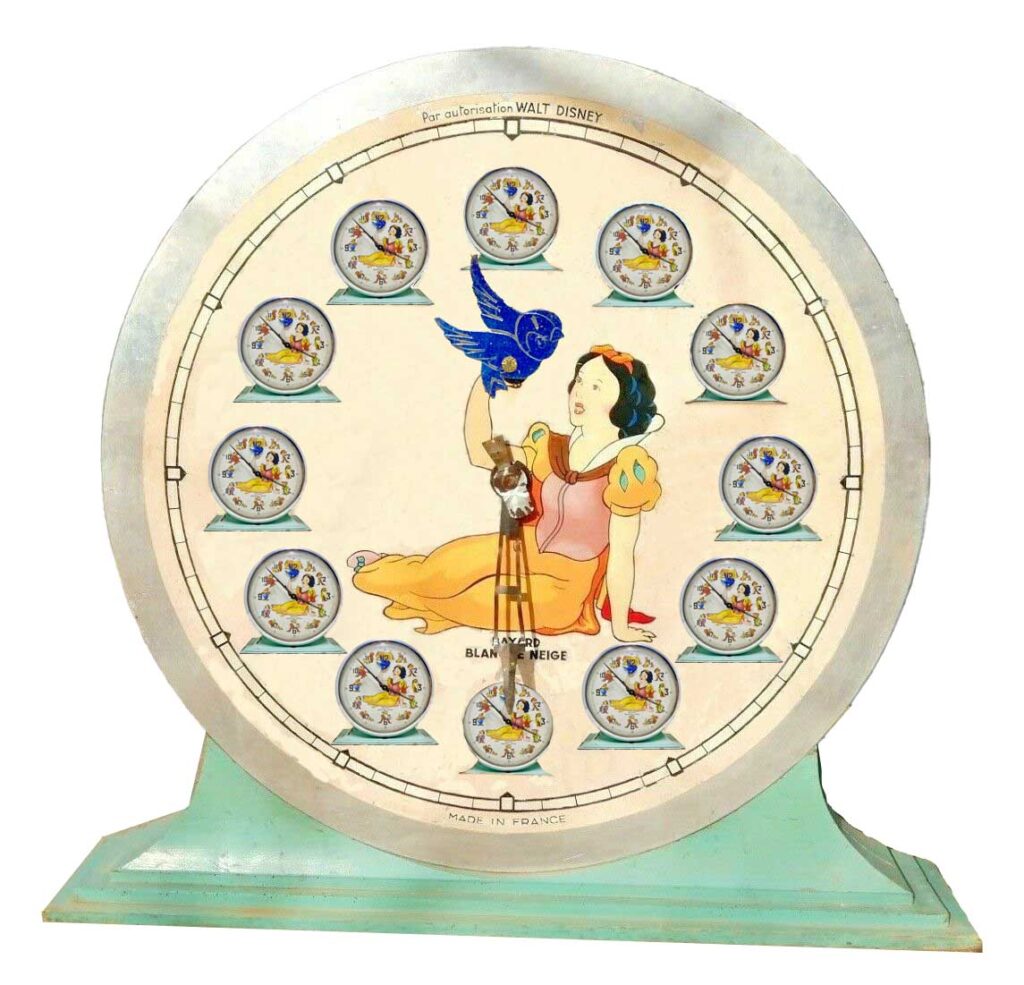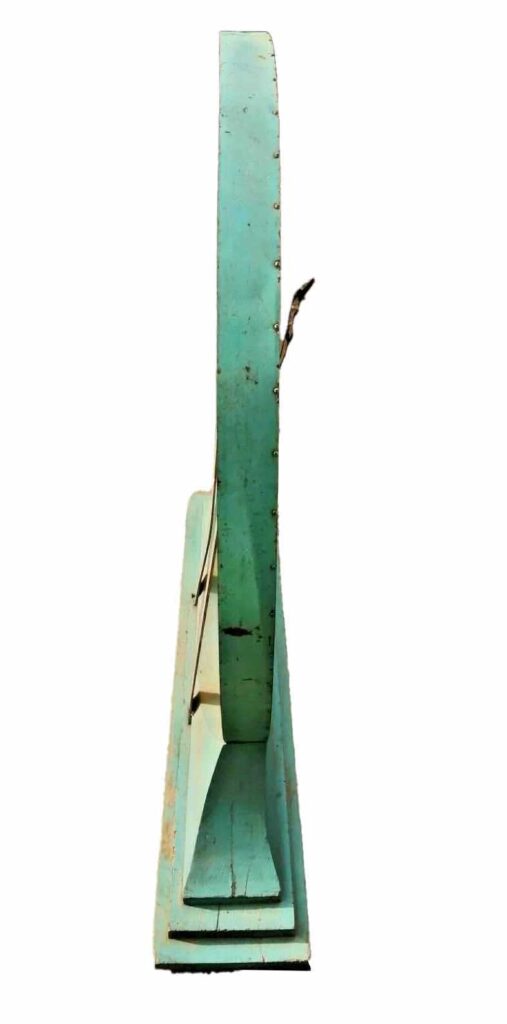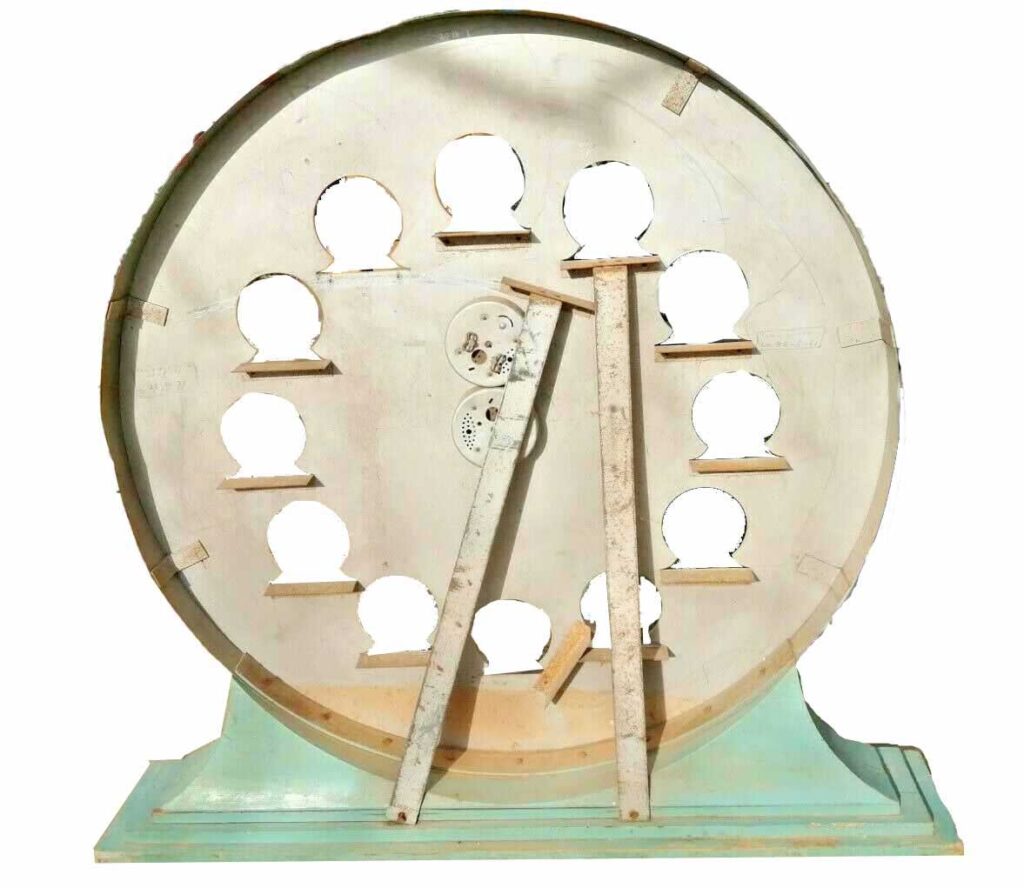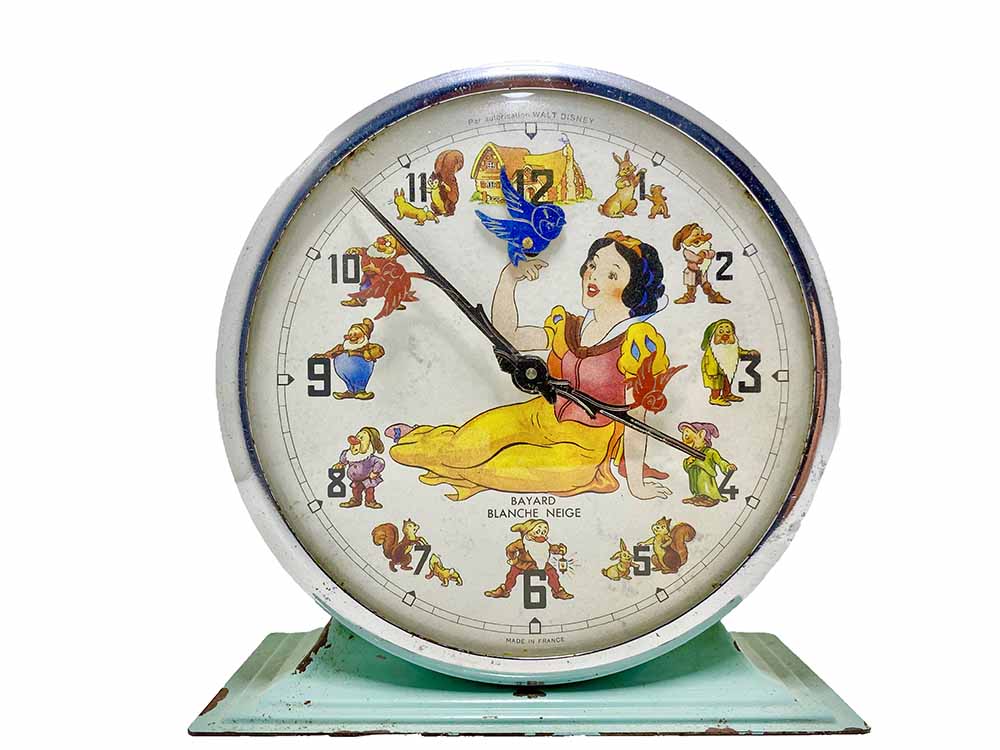
This alarm clock is difficult to date because, although it exists in several versions, they always feature the same visual and only the most recent versions have a date directly inscribed on the dial. Some boxes show a price printed directly on the box, others do not.
The illustration shows Snow White sitting on the ground. She appears to be singing, raising her right arm to support the blue bird that beats the seconds on the alarm clock. Each number on the dial is accompanied by a dwarf or a drawing of the cottage or animals. The hands represent branches on which two red birds are perched.
Giant alarm-clock-shaped displays, over a meter high, were used to display the real alarm clocks, which were inserted into the recesses in place of the numerals, thus making it possible to display 12 alarm clocks. Two mechanisms behind the display operated the hands and the bird, as on the models for sale.
Advertising and History
A blotter, popular with advertisers in the days of fountain pen writing, extols the merits of these alarm clocks featuring the characters Mickey, Donald, Bambi, Pluto and Pinocchio. If we take into account the most recent film, Bambi, released in 1948 in France, the alarm clocks were already in circulation by then, as the characters from later films such as Cinderella or Alice are absent from the advertising. As a matter of fact, a May 13, 1948 article in the magazine “L’Ordre” written by “Françoise”, entitled ” Paris Fair or home economics “, mentions the Snow White Bayard alarm clock. This doesn’t guarantee that it hadn’t been made before, but it’s true that the Paris Fair is supposed to present new products.
Interestingly, less than a year after this article, and the potential introduction of this Disney license, we learn on February 21, 1949, from “L’Humanité” that the workers at the factory manufacturing them are on strike because the company’s capital has suddenly jumped “from 2 million 675,000 francs in 1946, to 5 million 350,000 francs in 1947, then miraculously to 53 million 500,000 francs in 1948. In the space of 15 months, alarm clocks underwent three successive increases of 20% and a fourth of 15%.” The workers seem to have received nothing from this fortune, hence the strike. We can’t help thinking that the obvious craze for Bayard alarm clocks is probably no stranger to its agreement with Walt Disney S.A. It’s also understandable that such changing prices have ceased to be printed right on the boxes.
Advertisements still feature this same alarm clock alongside those for Maya The Bee and Heidi, two Japanese series broadcast on French TV in 1978 and 1979 respectively. The alarm clock was manufactured with relatively few modifications until 1984, when the company went bankrupt.
